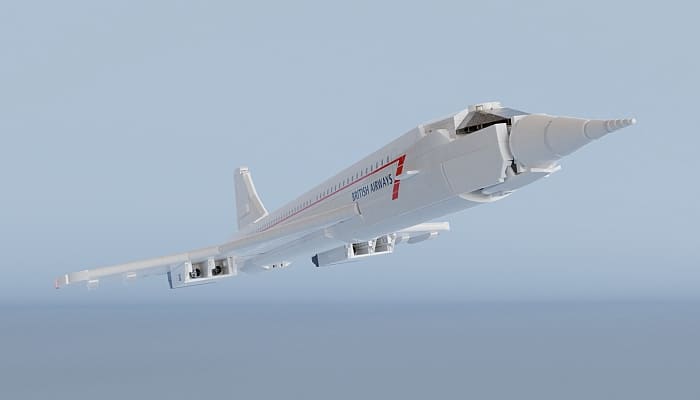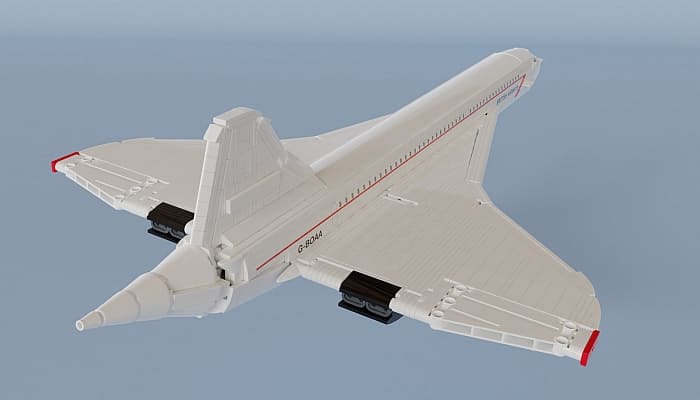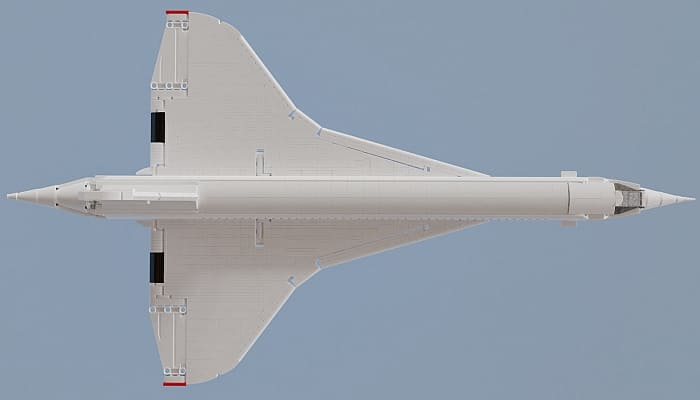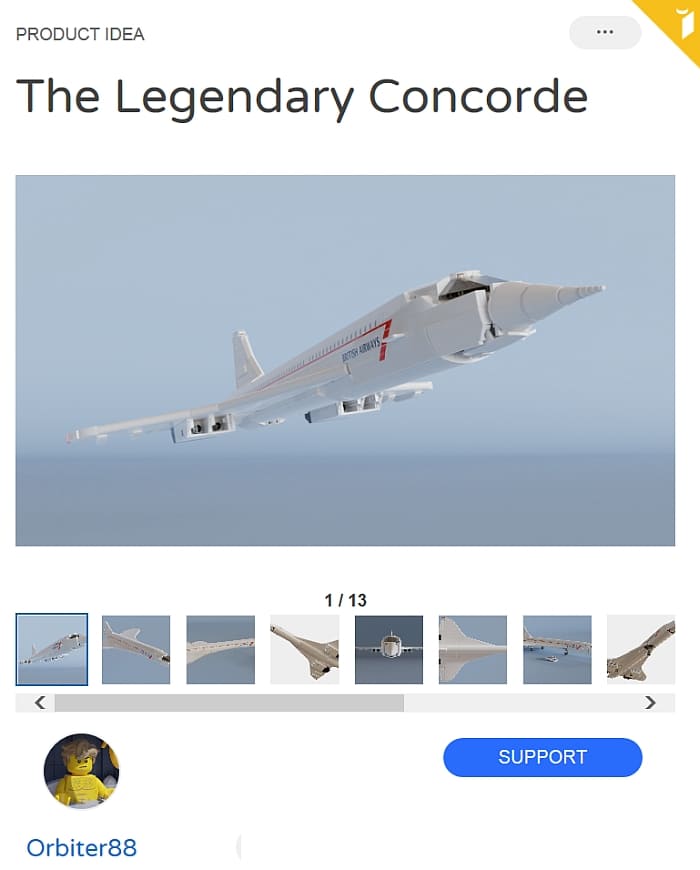(Written by William)
As I’ve mentioned in previous articles regarding LEGO Ideas, I have, on occasion, started up conversations with other builders on the platform. Part of my efforts to communicate is to drum up support for my own projects, but I get value from the interactions as well. Case in point, I got into a conversation with a builder that goes by the name Orbiter88. They read my bio, saw that I write for theBrickBlogger, and asked if I could write a piece on their creation; The Legendary Concorde. This made me think of an important topic when working on your own LEGO projects; doing research on your subject.

WHY IS RESEARCH IMPORTANT FOR LEGO FANS?
Research deepens our knowledge of a subject. Crucial details will inform us as to what is important. Chances are that if you have a project in mind, someone else had already done something similar – if not the same – as what you’ve built. Therefore, having intimate knowledge of a subject can be what gives you an edge over all others.
“My admiration for Concorde prompted me to rebuild this aircraft with LEGO. I knew before, that it would be a big challenge as Concorde has curves and shapes to perfectly slip through the air. The construction of the delta wings was maybe the most difficult thing, like it was for the engineers of the actual Concorde. My goal was to avoid sharp edges or rough surfaces. While trying to achieve this, I was struggling with a lot of different techniques and often ended up with unsatisfactory results. But step-by-step a promising solution evolved. And finally – after hours and hours of trial and error – the wing met my expectations.” – Orbiter88

Of course, you may realize that not all information you find on a subject is useful. Ultimately, information is only as good as you can frame it. For example, on Orbiter88’s project, they use a number of quotes from famous people talking about the aircraft. These sound bites by themselves aren’t essential, but they do two things. First, they break up the flow of the dry technical jargon, which makes that portion of their description much easier to read. Second, they supply context as to why this aircraft is so legendary.
APPLYING RESEARCH TO YOUR LEGO PROJECTS
Now that we just had a small example of applied knowledge, we should discuss how it can help you build. In this case, the research pointed to a few characteristics of the aircraft that needed to be absolutely correct in order to match up with the actual plane. This in turn allowed Orbiter88 to focus on those areas to get them just right.
“But the wings was just the beginning. There was a hole plane to add. The next tricky part was the nose. As it is already challenging to manage the fuselage curves, the nose is an outstanding challenges as height and width at the same time undergo a slight change till they meet in the tip of nose. There was a lot of possibilities to destroy the aesthetics of the whole model.” – Orbiter88

LEGO elements have a very unique property when it comes to being a medium for creation. You can easily compartmentalize sections of a model so that you don’t get overwhelmed. And that is exactly what happened here. You can follow Orbiter88’s journey through the building process by reading the description of the project.
Sure, they don’t outline every trial and error they went through, but thanks to the research they did, there was some way for them to measure how well the project was turning out. And honestly, that is the biggest help for many builders.
Creating a model is often subjective when it comes to determining how well the final design looks. As LEGO fans, we sometimes even rag on official set because it didn’t reach our expectations. The fear of how others will react can be a paralyzing barrier for many. If we change that perspective to, “Does this measure up to the research I’ve done?” Then building becomes a much more practical and less emotionally charged task.
A CALL TO ACTION
Thankfully in the times we live in, research is just a few keystrokes away. So, it shouldn’t be too hard to do even a little bit whenever you’re trying to put your best foot forward. I’d recommend taking a creation you’re very proud of and asking yourself, “What don’t I know about this thing?” Then do a little research and see if that inspires you to make your best thing even better!
In order to become better builders, we need to know what we can do to push ourselves further. Normally I talk about very specific building techniques, but this LEGO Ideas project really let me break down another important part of the process. Now, I’m not saying you have to do research on everything you build. I think many might find that exhausting, if not downright un-fun. Rather, it is important to know what you can do – that has nothing to do with building techniques – that can improve your models.
SPECIAL SHOUT-OUT TO THE CONCORDE PROJECT
I want to thank Orbiter88 for reaching out and asking for an article to be written on their project. If you like, check out and support with your vote their The Legendary Concorde model. And maybe even ask some question in the comments. After all, that’s research!

What do you think? Do you research the projects you are working on? Are there any interesting discoveries that you have made? Feel free to share your thoughts and discuss in the comment section below!
And you might also like to check out the following related posts:












This comes just the right time for me as I’m doing research for my next project. One thing I found challenging is that real scale and Lego scale are not the same. In Lego, everything is made smaller and cuter.
You could make things more realistic, but then they won’t fit with Lego sets. This is especially true for vehicles and buildings. So you have to scale things down twice. Once from real scale to about minifig scale, then again to Lego scale.
Yeah, my buddy who makes models of trains has the same issue. His compromise is to scale up the model and scale down the realism. So he ends up with a larger model on average that is closer to the real thing but still not perfect.
This is why many old-timers don’t build minifig scale. There is even a saying amongst older afols that minifigs ruined Lego. I wouldn’t go that far, as I like minifigs, but as you said, their scale is challenging to work with when you also want to build something realistic.
This is very true. It has a lot to do with the fact that minifigures are scaled to an artistic scale rather than a relistic scale. It’s kind of like when a cartoon has a super-deformed version to look cute. You can tell what they are meant to represent but the two versions aren’t really compatible.
The most obvious example of the scale problem is that you can’t easily fit two minifigures next to each other (side by side) in a car. An eight stud wide car would obviously be out of proportion.
LEGO 1 x 4 x 3 windows also seem unlike anything in the real world.
I enjoy research and consider it one of the most interesting parts of any new project. And I enjoy adding some of the interesting features I learned about. It’s good for learning and good for conversation.
I forgot to add that another thing I like is finding the perfect piece to mimic something. It’s so satisfying to find just the right part!
That is a whole other area of research I never got into talking about. Just finding parts is one thing, researching the perfect part is a whole different level.
Nice project. And I appreciate the research the designer did to make it as close to the original as possible. Having said that, I don’t think this will do well on Ideas. It’s too plain. Not the designer’s fault, it’s just what it is.
Yeah, a lot of people don’t think about what LEGO will consider when they have projects under consideration. A model can look as awesome as all get out, but if it has a terrible build experience or is poor in terms of play potential it can easily be axed.
Build what looks good and love it. Who cares if it is scaled to minifigs. They are just laying around in boxes unused. Scale matters only for train sets and modulars so they look nice next to each other in a display. NO my modular city has no minifigs. Nor do my trains have any figs. LIfe is not represented well by a figure that, if life sized, would be a four foot tall three foot wide person. Hideous at best.
Hmm, a city or train without any human life whatsoever could feel quite lifeless, though. Maybe one could include brick-built figures with more human-like proportions…
That’s a really neat project, even if it doesn’t make it to 10k. I love it when people do projects like this (aircraft, ships, tanks, etc.) and make them as real as possible. Great job!
As for me, I usually just build for myself, but I still do research on subjects I’m not familiar with. Sometimes the research turns out to be more interesting than I initially thought.